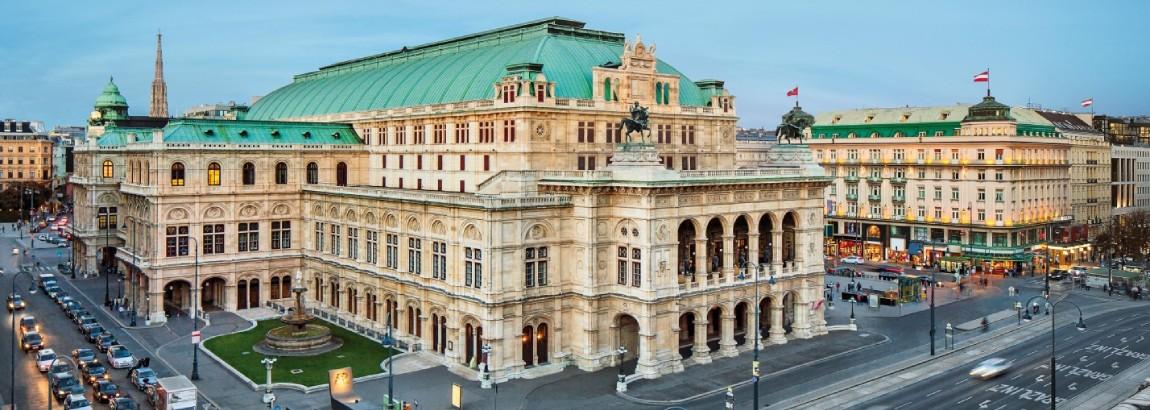
| City - Airport | Departure: | ||
| Iasi | Chisinau | ||
| to Vienna (VIE) | IAS → VIE | RMO → VIE | |
| - International (VIE) | IAS → VIE | RMO → VIE | |
Vienna's Old Town and Schönbrunn Palace were inscribed on the UNESCO World Heritage List in December 2001. According to the Mercer international study published in May 2012, which compared the quality of life in 221 cities, Vienna was ranked first in the world in terms of quality of life for the fifth time in a row.
the main summer residence of the Austrian emperors of the Habsburg dynasty, one of the largest buildings of the Austrian baroque. Located in the western part of Vienna, 5 km from the city center, in the Hietzing district. One of the most beautiful palace and park ensembles in Europe. In December 1996, at the 20th session of the World Heritage Committee, Schönbrunn was included in the list of UNESCO World Heritage Sites. The list included the palace and park with its numerous fountains and statues, the glorietta and pseudo-Roman ruins, as well as the Schönbrunn Zoo, the oldest in the world.
catholic cathedral, national symbol of austria and symbol of the city of vienna. The Chair of the Archbishop of Vienna is the Primate of Austria. Located in the center of the old town on St. Stephen's Square. The first temple on the site of the cathedral was built in 1137-1147; the cathedral within its current boundaries was built in the 14th-16th centuries and acquired its modern look by 1511.
Palace complex in Vienna in the Baroque style. Built by Lucas von Hildebrandt as a summer residence for one of the greatest generals of his time, Prince Eugene of Savoy in the early 18th century. After the death of the Prince, Belvedere was bought by Maria Theresa. Currently, the two palaces house the Austrian Gallery. On May 15, 1955, the Austrian Declaration of Independence was signed in the Upper Belvedere.
large public park and recreation area in Vienna. Located in the southern part of Leopoldstadt between the Danube and the Donau Canal, stretched along the coast for 5 km. Most of it is occupied by the so-called "Green Prater", where the main alley, the territory of the Vienna International Fair, the hippodrome, the stadium, the velodrome, sports grounds are located. In the north of the Prater is the Wurstelprater, an amusement park often referred to simply as the Prater. A miniature railway has been laid through the park, and there is also a giant Ferris wheel built in 1896-1897.
open market near the center of Vienna. It is located on the border of the urban areas of Wieden and Mariahilf between the two former banks of the Vienna River, removed in this place at the end of the 19th century underground. It is the largest market in the hinterland of Vienna. On the section between Karlsplatz and the exit of the Kettenbrückengasse metro station, there is a daily food market, a small number of pavilions selling clothes, as well as several cafes and restaurants.
one of the largest museums in the Austrian capital. Located on Maria Theresa Square in Vienna, opposite the Kunsthistorisches Museum, similar in architecture. The Natural History Museum was built to house the vast collections of the Habsburg Empire. The museum contains unique exhibits presented in thirty-nine rooms, such as the Venus of Willendorf, the Shiner collection, the skeleton of a diplodocus, as well as plants and animals that died out 200 years ago.
the largest opera house in Austria, one of the most important opera centers in the world. The grand opening of the opera house building took place on May 25, 1869, on this day they gave Mozart's opera Don Giovanni. On March 6, 1945, as a result of an American bombardment, the theater building was partially destroyed. Restoration work continued until 1955, the theater was opened with a production of Beethoven's Fidelio. At the same time, the tradition of annual balls at the Vienna Opera was renewed.
residential building in Vienna. The building has a "hilly" number of storeys. Trees and bushes are planted inside some niche rooms and on the roof, 250 units in total. In the house, Hundertwasser embodied his ideals of art and beauty, such as the use of a whole palette of colors, the absence of straight lines. The motley facade is complemented by windows of different sizes and shapes, mosaics and ornaments made of colored glazed tiles. On the contrary, in 1990-1991, the so-called "Hundertwasser Village" - a trade and exhibition center - was implemented. This is a building with a characteristic facade and a small town inside. There is a cafe-bar, souvenir shops.
was built in 1964. The tower is located in the Donaupark on the banks of the Danube River. The height of the tower is 252 m. It is the tallest building in Vienna and the second tallest in Austria. The observation deck is located at a height of 150 m, 2 elevators lead to it, lifting visitors up in 35 seconds. The site has a bungee jumping mechanism, which is used in the summer. In addition, at an altitude of 160 and 170 m there are two revolving restaurants.
located on Friedrich Schmidt Square in the 1st arrondissement. The building was built in 1872-1883. designed by architect Friedrich Schmidt. Here are the offices of the burgomaster of the city and the municipality. The façade of the building is a magnificent example of a neo-Gothic secular building. The appearance, and above all the 105 m high tower, is made in the tradition of the Flemish Gothic town halls, hinting at medieval city freedoms.
Airports:
Airports: